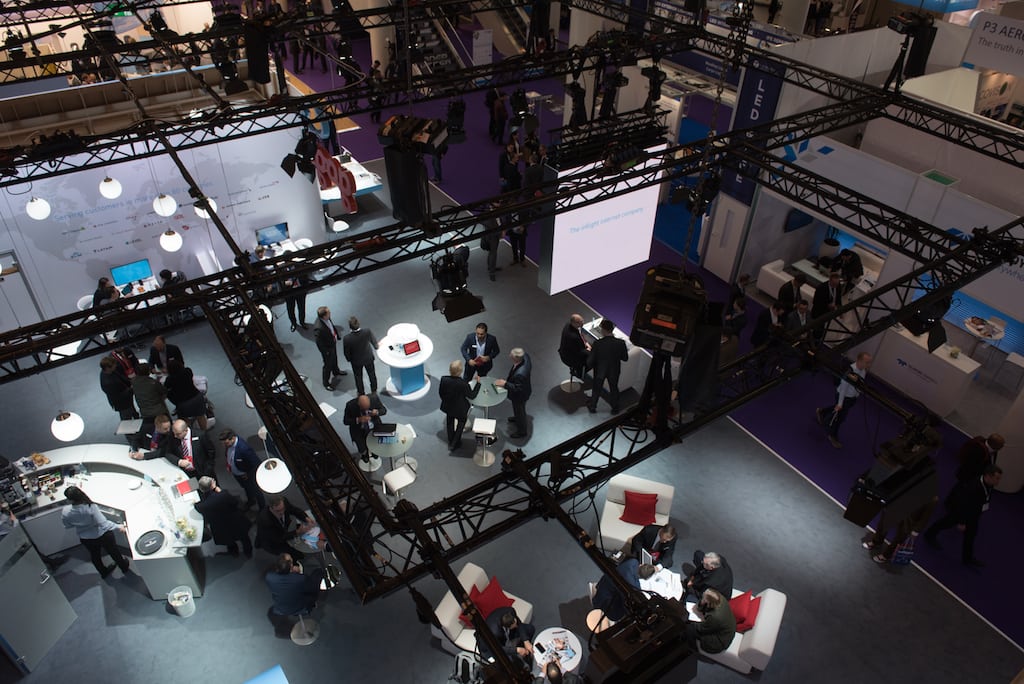An Aviation Schmooze Fest Reveals a Passenger's Wish List for Jet Travel

Skift Take
Yes, there's some innovation on display at the annual Aircraft Interiors Expo in Hamburg. But mostly, the three-day show is about networking and building relationships.
One afternoon earlier this month, just before his whiskey "ambassador" was to begin serving customers at the 4 p.m. happy hour— "I think he was appointed by the Scottish government" — James Lang, who likely knows more about airplane seat leather than anyone alive, spoke wistfully about the time several years ago when his company hired a bagpiper in an attempt to curry favor with airline executives.
"That caused the most monumental stir in the hall," said Lang, director of Scottish Leather Group, the UK's largest leather manufacturer. "It's just a little bit of fun. People either love piping or hate it. But you get noticed."
Few know more about what it takes to cause a scene at the annual Aircraft Interiors Expo than Lang, who remembers the first one, in Cannes, France, in 2000. No one knew what to expect, and, as he recalls, only about 30 or 40 companies came. "I think," he said, "the word, Cannes, hit people more than aircraft interior."
No longer.
Now, more than 14,000 people come, not to Cannes, but to a massive convention center in Hamburg, where the show moved in 2002. At this year’s three-day event in early April, roughly 1,200 representatives from more than 260 airlines visited stands for 600 companies, some paying more than 680 Euros per square meter ($840 U.S.) for prime space.
Big companies, like Airbus, or Recaro, the seating manufacturer, often build outlandish multi-level stands to house cabin and seat samples, sometimes only allowing people to enter if they have appointments, an approach that keeps competitors (and sometimes journalists) away. When ai
